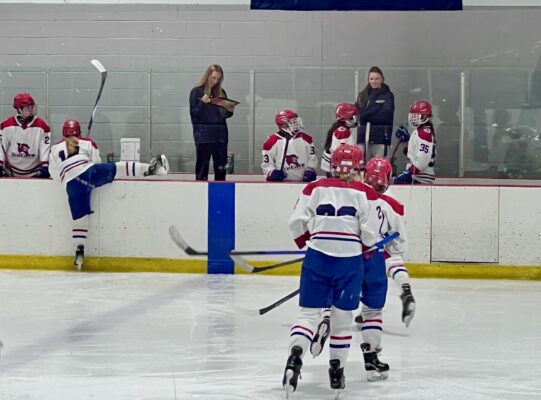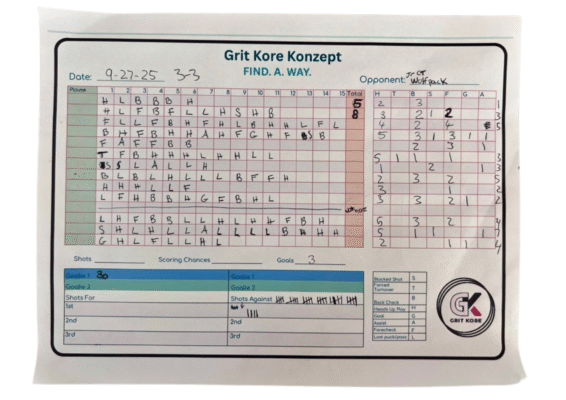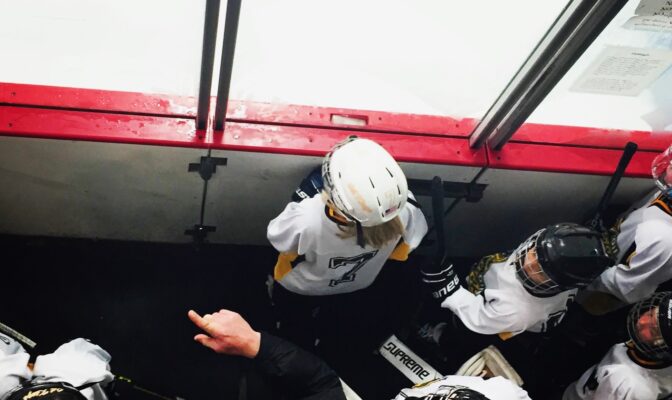If you’ve ever watched the clock tick past the first whistle and thought, “Surely this kid just lost a puck battle for the hundredth time today,” you’re not alone. That’s why we created the Grit Score Hockey system. There’s a particular kind of stress for a hockey parent, you’re cheering from the stands, watching every shift, trying to parse the invisible struggles beneath every play.
Even as a coach, I’ve spent plenty of time watching my own kids’ games from the stands, trying to decode what really happened on that 2-on-1, wishing I could see the game through their eyes for just a second. That’s why the Grit Kore Konzept isn’t just another analytics gimmick, it’s a language we build, so we can name what’s happening on the ice, pinpoint what to celebrate, and chart improvement in real time. Building a connected team dynamic that develops every player to his or her highest potential.
Fully prepared for my weekly data collection, disaster struck: I was activated from the EBUR (Emergency Back-Up Referee) roster to ref games. Long story short, due to my ref duty, I only collected data for one half-ice game.
But luck showed up in the form of a prep school player who stepped up, not just to help coach, but to run point on data collection. It was a perfect trial run for something we’ve been wanting to test: how realistic is it to collect a full Grit Score dataset during a live game, and what’s the most efficient method?

Turns out, there are three viable paths to the Grit Kore Konzept data collection
- Coach as multi tasking “Stat-Junkie-in-Chief”
This is the “me” method, you’re coaching, managing shifts, and scribbling down T’s and -P’s like a Wall Street trader during a market crash. With grit and practice, this can absolutely become second nature.
- The Volunteer Model
A parent-coach or high school player commits to data collection for the season. They’re not juggling the bench, just the numbers. Bonus: this role is a great way for younger players to build hockey IQ.
- Post-Game Analysis (LiveBarn style)
Can’t get it live? No sweat. Anyone, designated parent, coach, or player, can review the game on Livebarn after the fact and score the game at their own pace.
This three-pronged model opens up the Grit Kore Konzept to nearly any team with a bench and a phone.
Even one session gives us a peek into the patterns. Below are fresh observations, equal parts curiosity and clinical, from that lone data set.
Observations from the Ice this weekend
Tier 1 U14 Girls Team
One Grit Score session (single data point, but interesting nonetheless)
- Score: tied 3–3
- Gross Grit Score: 97
- Lost Possession (“–P”): –39
- Net Grit Score: 56

Key take‑aways:
- Nearly no forced turnovers (“T”)
The glaring absence in their data: they rarely wrestled possession away. In open rushes or 50–50 battles, they conceded. But in structured areas, backchecking, forechecking, shot suppression, they did engage and grind. In other words: they may shy away from chaos, but they’re willing to fight in the trenches.
- High engagement on lower-percentage puck plays
They battled for rebound pucks, scrappy corners, and blocking lanes. Their shot volume was noticeable, even if shot selection wasn’t always ideal. That says commitment.
- Flow vs. confrontation?
It’s intriguing to wonder: Is their style more “soft in open ice, stiff in structure”? Or did this session just lean that way? More data will tell whether this is stylistic or situational.
Given the net score of 56, that was a tie well-earned. They may not have dominated possession, but their grit in contested zones saved them.
Half‑Ice Mites
Same opponent, familiar faces. The narrative: a sluggish start, a couple of goals down (yes, the scoreboard may be blank, but ask any kid, they feel the deficit), then a pivot: tighten the defense, force turnovers, unlock offense.
- Defensive points: 52
- Offensive points: 54
That’s nearly perfect balance. They snuffed chances low, and opened lanes up high. The shift from passive to reactive defense made their offense possible.
What the Numbers Say
- Offense and defense are symbiotic
The Mites and the girls both landed nearly even splits. If your team can’t defend, it seldom attacks, and if you can’t possess, offense never happens. Reality check: defense is not a consolation prize — it’s a primary pillar.
- Possession is the roof, but grit is the bricks
Pucks don’t magically stay with you. They need to be wrested, clawed, managed. Without grit, the turns forced, the battles won or lost — you lose connection to the game’s flow.
- Data refines intuition, it doesn’t replace it
These numbers are “just the first draft” of what’s happening on the ice. Over time, patterns will emerge. As coaches and parents and players, we’ll get sharper at saying, “Here’s where we leak. Here’s where we surge.”

In Closing: The Grit Kore Konzept Vision
We’re building more than stat sheets. We’re crafting a holistic lens on the game, one where every shift, every battle, every pass, and every backcheck has voice. The Grit Kore Konzept is not about isolating pieces; it’s about harmonizing them. It’s about cultivating a team culture where every player is pushed to his or her edge, where role clarity meets raw potential, and where success is measured both in goals and in resolve.
A massive thank you to every coach who’s shared early results, trialed this language in practice, and braved the discomfort of new metrics. You’re building a rich tapestry of data, stories, and outcomes. We can’t wait for more numbers, more epiphanies, and the locker‑room moments where culture shifts, sometimes subtly, sometimes in a roar.
Keep observing, keep sharing, keep trusting the process. The numbers will follow. And when they do, we all win.
Find A Way.
Greg
